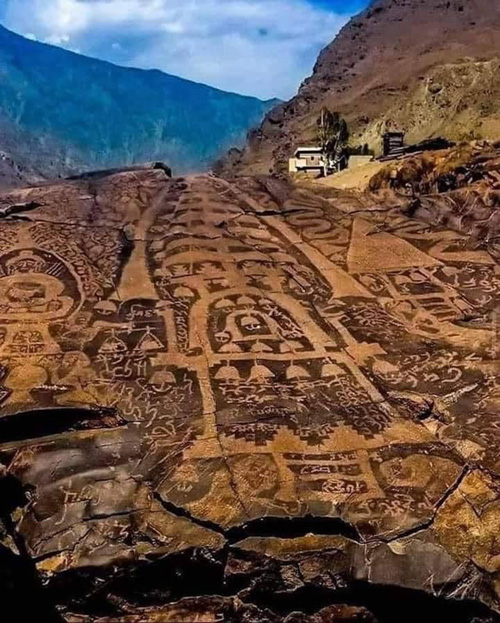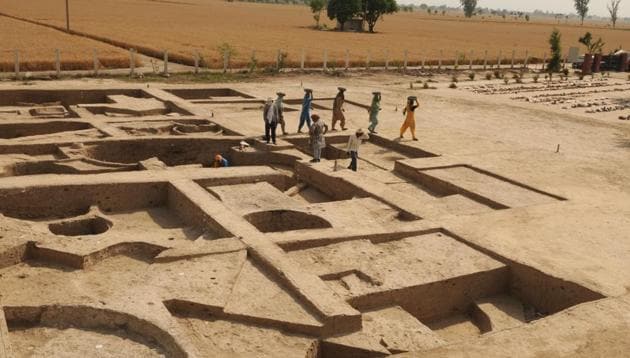Indus era 8,000 years old, not 5,500; ended because of weaker monsoon
Bhirrana
The study, published in Nature on May 25, focused on the ancient settlements in Bhirrana in northern Indian state of Haryana:
The Indus Valley civilization is 2,500 years older than previously believed
May 30, 2016
That could make the Indus Valley settlements, which were spread across Pakistan and northern India, even older than the Mesopotamian and Egyptian civilisations.
The Indus Valley civilization may be even older than initially thought.
A group of researchers in India have used carbon dating techniques on animal remains and pottery fragments to conclude that the Indus Valley settlements could be 8,000 years old—2,500 years older than previously believed
Bhirrana site
The Indus Valley Civilization: An Ancient Utopia?
In
the Bronze Age, Harappans had nothing to kill or die for and
no religion.
MARCH 26, 2024
PETROGLYPHS
UPPER INDUS VALLEY, PAKISTAN

| High in the Indus Valley of Pakistan are some of the most intricate and diverse petroglyphs on earth. These are the ancient Shatial glyphs on the Karakoram Highway in the Gilgit-Baltistan region. Dating from the Stone Age to the birth of Islam, the glyphs cover rocks and boulders stretching for over 100 kilometers. The writings and designs cover several languages, religions, and the symbolism of peoples dating back 10,000 years. Some of these magnificent glyphs are under threat from modern hydropower projects planned in the Indus Valley |
Cotton From Prehistoric Pakistan Found in 7,200-year-old Village in Israel
December 19, 2022
The cotton found in Neolithic Israel, dyed in blue and other colors, couldn’t have been local because it isn’t indigenous – but it was in the Indus Valley, archaeologists say
This is the earliest trace of cotton found in the Near East to date by centuries, the researchers say. They believe it originated in the Indus Valley, though do not rule out an African origin.
The site is noted to have been occupied as early as 9000 BC and by 7000 BC it provides the oldest evidence of ceramics in South Asia.
Excavations reported earliest archaeological sites in the world for cultivation of rice, with Lahuradewa Period IA giving samples that were dated by AMS radiocarbon to the 7th millennium BC
Remains of pottery and rice have been found from 7000-6000 BC
Chopanimando is an important archaeological site, which indicates transition of humans from food gathering society to food production society
 Kunal is one of the oldest pre-Harappan settlements
and dates back roughly to the 5th millennium BC. The roughly
6,000-year-old site holds within it a rich legacy and its ties
to the past can possibly help trace the history of Haryana, and
the country.
Kunal is one of the oldest pre-Harappan settlements
and dates back roughly to the 5th millennium BC. The roughly
6,000-year-old site holds within it a rich legacy and its ties
to the past can possibly help trace the history of Haryana, and
the country.